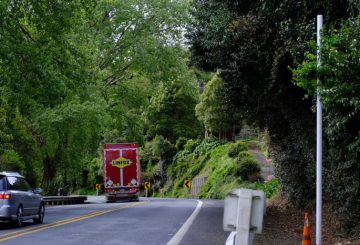Ang mga tagahanga ng kriket sa New Zealand ay maaari pa ring nababagsak mula sa kamakailang pagkawala sa pagsubok sa Australia sa Christchurch. Gayunpaman, sulit na tandaan na eksakto 50 taon na ang nakalilipas, sa parehong lungsod, ipinagdiriwang ng New Zealand ang isang makasaysayang tagumpay laban sa kanilang mga karibal. Ito ang unang pagkakataon na tinalo ng New Zealand ang Australia sa isang test match.
Ang laro ay naganap sa Lancaster Park sa isang maaraw na araw. Ang jackpot keeper ng New Zealand na si Ken Wadsworth, ay tumama ng apat upang makatipid ang panalo, na nagdudulot ng mga ligaw na pagdiriwang. Sa kabilang dulo ng pitch, ang opener ng New Zealand, si Glenn Turner, ay hindi nakalabas sa kanyang ikalawang siglo ng pagsubok. Ang kanyang mga iskor na 101 at 110 not out ang pinakamataas na sama-sama sa laban.
Si Turner, na ngayon na 76, ay tumingin sa kaganapan nang may kahinaan, na sinasabi na hindi siya isa para sa pagdiriwang. Inihambing niya ang tagumpay sa ‘isa pang araw lamang sa opisina. ‘ Gayunpaman, ang panalo ay makabuluhan para sa libu-libong mga tagahanga na nanood ng New Zealand na matagumpay na hinabol ang 228 run upang manalo sa huling pag-inings noong Marso 13, 1974.
Naglaro si Turner nang higit sa 11 oras at nahaharap sa higit sa 600 bola sa isang laban na mababang pag-iskor dahil sa isang pitch na pinapaboran sa mga bowler. Sa kabila nito, nagawa niyang makita ito sa pamamagitan ng limang wick, na ginagawang medyo komportable ang wakas.
Ang mga panalo sa pagsubok laban sa Australia ay bihira para sa New Zealand, na may isang panalo lamang sa nakaraang 31 taon. Noong 1974, kahit na ang paglalaro ng mga pagsubok laban sa Australia ay isang malaking bagay. Hanggang sa tag-init na iyon, isang beses lamang naglaro ang dalawang bansa dati, noong 1945/6, na natapos sa isang mabibigat na pagkatalo para sa New Zealand.
Naaalala ni John Parker, na binuksan ang pag-atak kasama si Turner sa panalo sa Christchurch, kung paano iniisip ng Australia ay hindi sapat na mahalaga ang New Zealand upang maglaro ng mga pagsubok laban. Ang kakulangan ng respeto na ito ay isang nakakaanyak na kadahilanan para sa koponan ng New Zealand.
Ang tagumpay ay isa ring personal na tagumpay para kay Turner, na nahaharap sa pananalita na pang-aabuso mula sa kapitan ng Australia na si Ian Chappell sa huling araw. Sa kabila nito, nanatiling cool si Turner at pinangunahan ang New Zealand sa tagumpay.
Ang panalo ay minarkahan ng isang bagong panahon para sa kriket ng New Zealand, na pinamumunuan ng isang batang si Richard Hadlee na kumuha ng pitong wick. Ang tagumpay na ito ay isang maliwanag na lugar sa kasaysayan ng Christchurch, na ipinagdiriwang pa rin ang pagho-host ng Commonwealth Games.
Sa kabila ng mga pagdiriwang, ang mga manlalaro ay may kaunting oras upang magpahinga. Lumabas silang lahat mula sa Christchurch sa gabing iyon upang bumalik sa trabaho sa susunod na araw.
Mula noong panalo noong 1993 sa Eden Park sa Auckland, ang New Zealand ay nanalo lamang ng isang pagsubok laban sa Australia – sa Hobart noong 2011.





























































